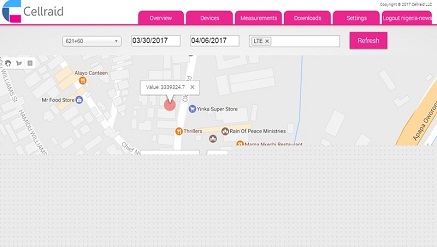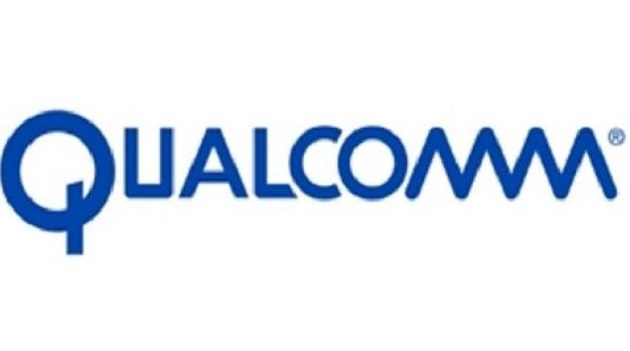Telecom
Quanta Monitor Can Now Tell Level of Radiation from Your Cellphone

Cellphone Radiation (CR) in a very hot topic multi-billion-dollar smartphone industry do not like to talk about, however, the issue is existing and now telecom regulators, operators and big public can start to use an innovation, and be aware about the level the radiation, and take some actions accordingly.
Obviously, there are growing concerns that electromagnetic radiation from one’s cellphone is absorbed by the head and body.
Exposure to such radio frequency energy has the potential to cause cancer, as indicated by the World Health Organization (WHO) since 2011.
Young, growing children, many of which are becoming addicted to social media and games have been identified as most vulnerable to the potentially damaging effects of cellphone radiation.
Thus, a Finnish startup- Cellraid, has taken up the challenge by developing unique applications to measure, monitor and also reduce exposure to cellphone radiation.
According to health experts, cell phones emit radiofrequency energy (radio waves), a form of non-ionizing radiation, from their antennas, but now, Cellraid is saying it is only small part of the radiation you should actively worry about.
Pasi Ala-Mieto, CEO Cellraid in a chat with Nigeria CommunicationsWeek, said they are quite concerned about the high level of exposure to radiation coming from cellphones hence they developed the world’s first apps for measuring mobile phone radiation.
Quanta Monitor is a free Android app that measures the SAR (Specific Absorption Rate) output, power density, and cumulative exposure to radiofrequency emissions from your phone.
Quanta Guard takes things a step further by automatically cutting off your data connection if safe SAR limits are exceeded. “We tried both apps out to see how they work and learn just how much radiation we’re exposed to on a daily basis,” he said.
Pasi Ala-Mieto states further, “Our development is good news for, not only the 5 billion cellphone users, but also telecom operators, phone manufacturers and telecom authorities, all of which have the potential to benefit from our ability to make cellphone use less risky, especially the increasing number of very young users of smartphones.”
Researches
Recently, scientists engaged in the study of biological and health effects of non-ionizing electromagnetic fields (EMF) raised fresh alarm based on their peer-reviewed, published research.
The scientists said they have serious concerns regarding the ubiquitous and increasing exposure to EMF generated by electric and wireless devices.
According to a report by guardian.ng, these include–but are not limited to–radiofrequency radiation (RFR) emitting devices, such as cellular and cordless phones and their base stations, Wi-Fi, broadcast antennas, smart meters, and baby monitors as well as electric devices and infra-structures used in the delivery of electricity that generate extremely-low frequency electromagnetic field (ELF EMF).
The scientists were joined by Professor of Radiation & Health Physics, Ladoke Akintola University of Technology, Ogbomoso, Oyo State; and Dr.Idowu Ayisat Obe, Department of Zoology, Faculty of Science, University of Lagos, Akoka, Lagos State.
Nigeria CommunicationsWeek found that the concerns over cell phones and other wireless devices prompted Toronto’s Department of Public Health to warn teenagers and young children to limit their use of cell phones.
The International Commission on Non-Ionizing Radiation Protection (ICNIRP) established in 1998 the “Guidelines For Limiting Exposure To Time-Varying Electric, Magnetic, and Electromagnetic Fields (up to 300 GHz)”. The WHO and numerous countries around the world accept these guidelines.
The WHO has also called for all nations to adopt the ICNIRP guidelines to encourage international harmonization of standards.
Nigerian Government’s Position
But, the Nigerian Communications Commission (NCC) has consistently refuted claims about telecoms equipment posing health hazards to the public. Though, the industry regulator has limited the discussions to telecom masts and towers, efforts to get the views of other industry player proved abortive as they were sceptical about commenting on the subject.
The Commission has severally relaxed the tension over the speculated health hazards that may arise as a result of erecting telecommunication masts near residential areas.
According to NCC, no research whatever had proved that Radio Frequency Exposure could enhance the possibility of contracting any disease.
They maintained that masts were not hazardous, saying that such fear was no scientific backup and urged participants at the event to pay less attention to such speculation and think more on how to move the industry forward.
How Cellphone Radiation Occurs
The CEO of Cellraid explains further “There are 5B phones causing non-necessary ‘extra radiation’ which means very fast battery consumption, which again means needs to burn coil, to charge these phones again. So far there is no institution which is really monitoring the RF exposure levels.
“Now when little kids are using their smartphones 24/7, phones in their pockets, data always on, and phone 0-10mm distance from their body hours, every day..and night…the 20 years old regulations to control SAR & power density (radiation levels) are not updated to face the real use of smartphones. Old regulation still suppose that the phone is at 15mm distance from the skull and only for voice talks, even the phone is on hand, pocket or close to body, rather than on the ear.
“We have developed Quanta Pro, that is for telecom operators and regulators to make RF Exposure measurements from the user perspective, to ensure that their operations are respecting the set limits. We are monitoring both uplink (phone), downlink (base station antennas) and additionally also wifi – just like the user is experiencing the ‘radiation’.
“In addition, we have developed solution for the consumers too; As, our technology is noting when the phone is close to body, head or hand, it can monitor the SAR level on real-time, and also limit the exposure levels, when certain thresholds are exceeded”.
How Quanta Operates
The solution, Quanta Pro, measures RF exposure level of the user in the field, streets, buildings, homes and places of work. The software runs on any Android device. It provides a low cost measurement solution for Telecom Authorities and Operators to identify high RF Exposure locations.
Quanta Pro is able to measure the combined level of radiation from the cellphone, network antennas and even Wi-Fi. At present network operators only measure radiation from network antennas (downlink). However, the main source of RF is the phone itself, which represents 99,9989% of all exposure.
“The strange thing is that telecom authorities and operators are focusing today on antennas that represent only 0,001% of the exposure”, CEO Ala-Mieto said. “I believe that soon every operator will measure the total level of RF exposure. And a real opportunity arises, when they compete to be “the healthiest choice” for their customers.
In addition, the company has developed Quanta Monitor, which is a free app for consumers, to monitor personal RF exposure levels, in real-time.“At last the user is able to know more about their own level of exposure to radio frequencies, at home and work, Quanta Monitor gives them the ability to compare networks, and keep a history of their accumulated exposure.”
Quanta Monitor and Quanta Guard are available in the Google Play Store for Android phones.
“We look forward co-operating with cellphone manufacturers like Apple and Samsung, as well as telecom operators and authorities”, said CEO Ala-Mieto respectfully and with the goal of “making all our communication life better”.
Telecom
Why Econet Wireless is Switching to VFEX

After nearly 30 years on the Zimbabwe Stock Exchange (ZSE), Econet Wireless, the country’s biggest technology company, is preparing to leave the bourse and move its property and infrastructure assets to the US dollar-based Victoria Falls Stock Exchange (VFEX).

Econet plans to spin off its towers, property and power installations into a new company, Econet InfraCo, which will be listed on the VFEX. Its mobile network operator business will be delisted from the ZSE.
Econet believes the market has failed to properly value its business and its assets. At the time Econet first released a cautionary on December 3, its market capitalisation was the equivalent of US$628 million.
A rally over the past days has lifted it to a market capitalisation – the number of shares times the share price – to around US$1 billion.
“For the last several years, the company has traded at a significant discount to its peers across Africa which trade at 6 – 8x EV/EBITDA.
“These peers have all already separated and realised value from their tower infrastructure whereas the company still owns its tower and other passive infrastructure which the company has now housed under a separate infrastructure company to be listed on the Victoria Falls Stock Exchange,” Econet said.
Econet will keep 70% of Econet InfraCo, with up to 30% used to settle an offer to shareholders who do not wish to remain invested.
The company argues that infrastructure assets are better suited to the VFEX, which trades in US dollars and attracts investors familiar with property and long-term infrastructure.
“Unlike the mobile network operator business in Zimbabwe, infrastructure assets represent a different class of investment, one that is better understood and valued within USD-based property and infrastructure markets.
“This is demonstrated by the higher Price-to-Earnings multiples at which listed real estate and infrastructure companies trade on the VFEX,” the company said.
Econet dominates Zimbabwe’s mobile market, with 88% of voice traffic, 82% of data usage and 73% of all subscribers. It has built the largest portfolio of telecoms assets.
By the end of the second quarter, it had 234 5G sites, 1,700 LTE sites, 1,900 3G towers and 2,860 2G locations.
In the half-year to August alone, it added 27 new 2G–4G sites and 100 new 5G sites.
In addition to these locations, Econet also holds other properties and power assets, including solar installations, Tesla batteries and generators.
The move follows a well-established trend in Africa.
MTN and Airtel Africa sold towers in Nigeria, Ghana, Uganda and Kenya to independent operators like IHS Towers and Helios Towers. Vodacom, Orange and Telkom South Africa have also carved out tower units through sale-and-leaseback deals.
Credit: Newsday
Telecom
Qualcomm Completes Third Edition of Make in Africa Startup Mentorship Program

Qualcomm Technologies Inc. has announced the successful completion of its third annual Make in Africa (QMIA) Startup Mentorship Program, marked by the virtual Make in Africa Finale 2025. The initiative underscores Qualcomm’s long-term commitment to fostering Africa’s vibrant innovation ecosystem through the broader Qualcomm Africa Innovation Platform.

Highlights:
- The 2025 Qualcomm Make in Africa program supported ten innovative startups from Kenya, Tunisia, Nigeria, Benin and Senegal, each addressing local challenges by developing tech-enabled solutions across critical sectors such as healthcare, sustainable agriculture, climate resilience and mobility.
- This year, the program attracted more than 400 applications from 19 countries, showcasing remarkable talent across the continent.
- Farmer Lifeline, of Kenya, was announced as the 2025 Wireless Reach Social Impact Fund winner, recognizing its impactful use of wireless technology.
- Applications for Qualcomm Make in Africa 2026 are now open. Applicants can visit the Qualcomm website to apply.
As a flagship initiative of Qualcomm, the equity-free program shines a spotlight on the creativity and drive of African founders leveraging advanced technologies such as AI, 4G/5G, robotics, connectivity and IoT to address pressing real-world challenges.
Now in its third year, the program remains steadfast in its mission to accelerate early-stage technology startups by providing tailored mentorship, targeted business coaching, expert engineering consultation and comprehensive intellectual property protection guidance – exemplified by resources such as Qualcomm’s L2Pro Africa training. This holistic support empowers founders to transform their visionary ideas into sustainable, market-ready solutions.
“This year’s cohort has demonstrated incredible ingenuity, transforming complex challenges into scalable, tech-driven solutions that will drive social and economic impact across the continent,” said Elizabeth Migwalla, Vice President International Government Affairs, Qualcomm Incorporated.
“Innovation is the driving force behind Africa’s future, and this year’s startups are a brilliant demonstration of that. The African Telecommunications Union (ATU) is proud to partner with Qualcomm for the Make in Africa 2025 program,” said John Omo, Secretary General of the ATU. “We are working to harmonize spectrum management policies, regional standards, and open data practices, but we know that true progress relies on large-scale support. That’s why we call on governments, universities, investors, and industry to support these initiatives – and any endeavor that places African ingenuity at the forefront.”
The 2025 cohort includes the following groundbreaking startups:
- Aframend (Nigeria): Uses AI to explore African medicinal plants for new drug discovery and aims to turn local remedies into safe, affordable treatments for diseases.
- AmalXR (Tunisia): Offers AI-powered virtual rehabilitation sessions on everyday devices, enabling easy patient and clinician progress tracking.
- Archeos (Benin): Automates fish farming with solar-powered sensors and feeders, providing real-time data on water quality and feeding levels for improved fish health.
- ClimatrixAI (Nigeria): Installs connected weather and flood stations with an AI platform to forecast street-by-street risk, enhancing early warnings and disaster response for local communities.
- Ecobees (Tunisia): Builds smart hive monitors and a digital platform for real-time insights into beehive-health, to protect bees and crops that depend on them.
- Edulytics (Senegal): Applies AI on handheld ultrasound devices for early detection of liver disease, aiming to make this special screening widely accessible.
- Farmer Lifeline (Kenya): Deploys small, solar-powered devices that scan fields for pests and diseases and send alerts straight to farmers’ phones to protect crops.
- Pollen Patrollers (Kenya): A women-led agritech startup using connected hive technology and AI to keep bee colonies healthy.
- Solar Freeze (Kenya): Provides solar-powered cold rooms with remote monitoring enabling farmers to keep fruits and vegetables fresh and increase earnings.
- Pixii Motors (Tunisia): Designs electric scooters with smart batteries that can be swapped in and out at local stations, aiming to revolutionize urban mobility.
Wireless Reach Social Impact Fund Winner
Kenyan innovator, Farmer Lifeline, was announced as the winner of the 2025 Wireless Reach Social Impact Fund. The fund, sponsored by Qualcomm® Wireless Reach™ Initiative, champions the innovative use of wireless connectivity to address pressing community. As the winner, Farmer Lifeline will receive dedicated funding and tailored technical support to scale its groundbreaking solution.
“Farmer Lifeline stood out with its innovative small solar-powered devices that scan fields to detect pests and diseases. This technology enables local farmers to effectively protect their crops, significantly increase yields, and improve food security”, stated Erica Ciaraldi, Vice President, Wireless Reach, Qualcomm Incorporated.
“Their visionary approach and dedication to agricultural resilience have positioned them as leaders in their field. They are driving meaningful change for smallholder farmers and inspiring others across the continent. This fund will empower them to scale their impact further, enabling broader reach and deeper influence across Africa and the world.”
In recognition of the groundbreaking innovations demonstrated by all finalists, each will receive stipends designed to accelerate their growth, support strategic development and safeguard their intellectual property. This comprehensive support underscores Qualcomm’s commitment to fostering innovation and ensuring these visionary projects can thrive sustainably.
Looking ahead: Launch of Qualcomm Make in Africa Startup Mentorship Program 2026
Building on the significant success of previous years, Qualcomm is excited to launch the fourth year of the program in 2026.
Applications for the 2026 Qualcomm Make in Africa cohort can be found at the Qualcomm website.
Telecom
Fynd Expands Global Footprint, Adds Africa With Surtee Group Partnership

Fynd, an AI-native retail technology platform backed by Reliance Retail Ventures Limited, today announced its official expansion into South Africa, onboarding Surtee Group – one of the region’s most established luxury and fashion retailers – as its first strategic customer in the market. This milestone marks a pivotal moment for African retail, as legacy brands begin embracing digital transformation to meet the demands of a rapidly evolving consumer landscape.

Fynd
Fynd’s entry into Africa reflects its commitment to enabling digital transformation in high-growth retail markets worldwide. The move also comes at a turning point when South Africa’s e-commerce sector is projected to exceed R130 billion ($7.48 billion) in 2025, capturing nearly 10% of total retail sales – a fourfold increase since 2020.
According to Statista, South Africa is expected to have 11.7 million e-commerce users in 2025, with projections reaching 21.5 million by 2029. This growth is being driven by rising internet penetration, mobile-first shopping behaviour, and increasing trust in digital platforms. To meet rising consumer expectations, businesses are investing in AI and unified commerce platforms. Fynd’s scalable, AI-native stack is built to support this shift, enabling agility, personalisation, and operational efficiency.
“South Africa’s retail landscape is evolving fast,” said Ronak Modi, Chief Business Officer – Global at Fynd. “Consumers expect seamless, personalised experiences across every channel, and retailers need agile, intelligent infrastructure to keep up. Our platform is built to unify disconnected systems, speed up fulfilment, and elevate customer engagement; all without adding operational complexity.”
“South Africa is an exciting addition to our global footprint. The market is digitally ambitious, brand-forward, and ready for intelligent commerce infrastructure. Our goal is to help local retailers unify siloed systems, personalise engagement, and accelerate fulfilment without adding complexity.”
Surtee Group operates 94 boutiques and 2 e-commerce sites, comprising the multi-branded stores Levisons and the mono-brand boutiques, namely, Giorgio Armani, Michael Kors, Lacoste, Hugo Boss, VERSACE, TOD’S, Salvatore Ferragamo, Versace Jeans Couture, Emporio Armani, Burberry, Jimmy Choo, Luminance, Paul Smith, Coach, and Armani Exchange. They will implement Fynd’s unified commerce stack, including Storefronts, Order Management System (OMS), Warehouse Management System (WMS), and Clienteling tools to connect in-store and online operations, streamline inventory visibility, and launch brand-specific ecommerce storefronts across its brand portfolio.
While online retail continues to surge, offline sales still represent the vast majority of revenue for retailers in the country. Fynd will enable Surtee Group to unify its offline inventory online, power ship-from-store capabilities, and improve both margins and sell-throughs. Additionally, products like Clienteling will empower in-store teams to engage customers better and drive incremental sales through personalised recommendations and seamless omnichannel experiences.
Fynd’s entry into the market is designed to meet this demand. Its AI-native platform enables real-time stock visibility, ship-from-store capabilities, dark store orchestration, and intelligent customer engagement all within a single scalable solution.
As part of its digital transformation roadmap, Surtee Group aims to consolidate its leadership in luxury and fashion retail while expanding into e-commerce and improving omnichannel agility.
“We were looking for a partner who understood both the technical and strategic dimensions of unified commerce,” said a Surtee Group spokesperson. “Fynd stood out for their proven scalability, consultative approach, and deep experience with global fashion brands, many of which align with our portfolio. Their unified stack enables us to modernise operations while building a connected, brand-first customer experience.”
Fynd has already scaled across India, the GCC, and Southeast Asia, and now adds Africa to its regional presence. With Surtee Group leading the transformation, Fynd is positioned to play a key role in powering unified commerce adoption across South Africa’s growing digital economy.

 E-Business2 days ago
E-Business2 days agoNigeria Police Arrest Okitipi, Nigerian Allegedly Linked to Microsoft 365 Hack

 E-Financial2 days ago
E-Financial2 days agoWorld Bank to Approve $500m Loan for Nigeria Today

 News2 days ago
News2 days agoNITDA Partners OGP to Drive Presidential Digital Goals

 E-Financial2 days ago
E-Financial2 days agoCustoms Slam 3 Percent Surcharge on Banks over Delayed Revenue Remittance

 Telecom2 days ago
Telecom2 days agoWhy Econet Wireless is Switching to VFEX

 E-Financial2 days ago
E-Financial2 days agoFidelity Bank Boosts Maternal, Child Healthcare @ESUTH

 General News1 day ago
General News1 day agoJumia Kicks Off December Holiday Sale, Bringing Festive Deals to Shoppers Nationwide

 E-Financial1 day ago
E-Financial1 day agoAccess Holdings Shareholders Approved to Raise N40bn Capital Through Private Placement













